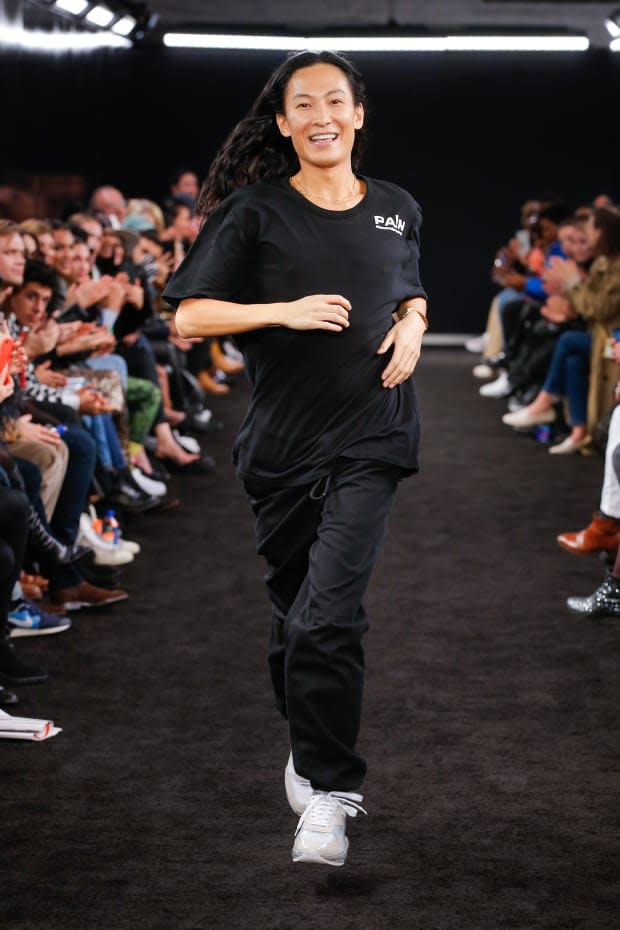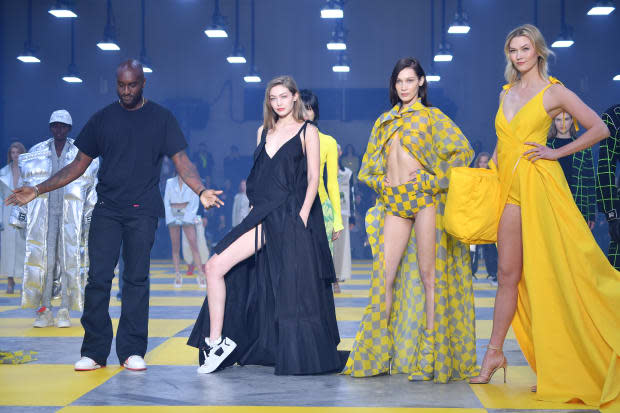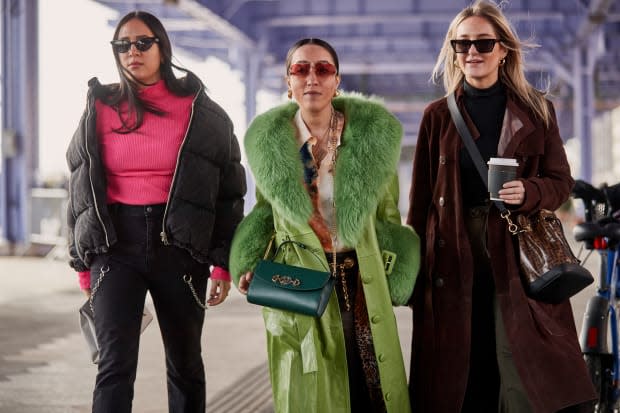Fashion Industry Burnout Is the Trend No One Wants to See Stick Around
Overworked insiders share their feelings of burnout, what triggers it and what the solution is — if there is one.

Welcome to Career Week! While we always make career-focused content a priority on Fashionista, we thought spring would be a good time to give you an extra helping of tips and tricks on how to make it in the fashion and beauty industries.
To those outside of it, bemoaning a job in the fashion industry seems far removed, like an Ivy League student complaining about a weekend homework assignment.
But from the inside, many working in the fashion business say they suffer from burnout — a condition that might sound like a made-up millennial ailment, but one which the World Health Organization legitimized this week with a newly added definition. For those in fashion long familiar with burnout, it's an intergenerational problem dispiriting talent in an industry experiencing its own existential crisis.
The WHO definition of burnout applies specifically to "chronic workplace stress that has not been successfully managed," and is distinct from other conditions like depression, though the two may share similar symptoms. Burnout symptoms are described by the organization thusly: "feelings of energy depletion or exhaustion; increased mental distance from one's job, or feelings of negativism or cynicism related to one's job; and reduced professional efficacy."
The growing sentiment budding among professionals in the fashion industry is that burnout culture — characterized by a series of dualities like long hours met with low pay; slashed budgets and greater project deliverables; the need to produce more content or product in a saturated market; and an insatiable social media machine — is spreading across the industry with no evident solution in sight.
Related Articles
Fashionista's New Survey Suggests That Bullying Is Still Alive and Well in the Fashion Industry
The Shifting Media Landscape Has Also Changed the Dynamics of Mentorship
What Is the Future of the 'Fashion Editor' as a Career?
In 2015, WWD asked insiders — those required to keep up with an increasingly fast-paced fashion system where the next collection is expected to go into production nearly as soon as the previous one is unveiled — whether they felt the fashion industry was "heading for burnout" after a series of high-level designer exits across the board, most notably Raf Simons's sudden exit at Dior. There were those in the Karl Lagerfeld school of thought, who insisted burnout only affects those who can't keep up with the system. (The late designer told the paper, "if you are not a good bullfighter, don't enter the arena," and "fashion is a sport, you have to run.") Fewer were as forthcoming about the state of play, though Love Editor-in-Chief Katie Grand admitted, "everyone certainly feels the pressure of delivering more."
In the four years since, plenty of designers (with robust teams and, in some cases, billion-dollar conglomerates behind their brands) have repositioned themselves, presumably to lessen the burden of the industry's merciless churn, assuming they're still working in fashion at all.

Alexander Wang, for example, went off-calendar to show collections outside fashion week, shifting his brand's production schedule so that collections go to market twice a year instead of four times. (The official line of reasoning was that the move would better serve consumers, who wouldn't have to wait as long after a runway show to purchase Wang products.) When designer Christopher Bailey left Burberry in 2018, after serving as both chief creative officer and president, he told the New York Times, "I need some balancing in my life, having worked at a thousand miles an hour for so many years." Just last month, Simons gave a rare interview to The Guardian in which he warned: "Now everyone sees the runway show right away, and by the time the clothes are available, people have moved on to something else. This fast communication, it's exciting but it can be dangerous, too."
Of course, the phenomenon of burnout exists outside of fashion (the Washington Post went so far as to declare "burnout is everywhere,") but the industry may be uniquely prone to it. Several fashion insiders admitted feeling it to Fashionista, on and off the record. The nature of the 24-7 news cycle, social media, overproduction and inadequate compensation within the industry all contribute to feelings of burnout in fashion, which you can read about more in-depth below.
THE BUSYNESS FACTOR
Social media can exhaust the average person, but the reality of scrolling through Instagram, Twitter and YouTube as a fashion professional means a constant confrontation with peers who appear to be producing more work, attending more events and posting more content than conceivably possible. Those on social media sharing their work, much the status quo in fashion, make busyness (perhaps in place of meaningful contributions to the industry) more visible.
"Unlike a century ago, when Americans showed their status in leisure time, busyness has become the new badge of honor," the Harvard Business Review reported in April while examining how to keep busyness from becoming burnout. "Even as we bemoan workplaces where everyone is busy and no one is productive, busyness has actually become the way to signal dedication to the job and leadership potential."

Influencers post new deals they're touting or trips they're taking with a brand almost daily; in addition, fashion and beauty writers post unboxing videos of gifts from brands, clips of their published work and images from invite-only market appointments or brand dinners. Designers are expected to do and be seen, too: Virgil Abloh is lauded for his busyness and ability to juggle his roles as creative director for Louis Vuitton menswear, Off-White designer, international DJ and prolific collaborator.
"I think our industry continues to glamorize the 'busy' factor of it all and makes it 'cool' to be so busy that you lose sight of just how overworked you actually may be," a 25-year-old fashion public relations professional, who asked to remain anonymous, tells Fashionista.
TALENT IS CONSIDERED HIGHLY DISPOSABLE
As more people globally join the fashion industry, many professionals starting out in their careers describe feeling more disposable than ever. Young designers, like Jose Criales, who is employed by an American luxury fashion house, feel the need to prove themselves as tireless workhorses to brands for fear they'll be replaced by any number of creatives ready and willing to take their spot.
"There's a thousand other fashion grads who are just as good as I am," Criales, a 23-year-old who graduated the Savannah College of Art and Design's fashion design program in 2018, says. "At entry level, you don't need to be the best designer yet, but you need to be someone who is fast and works hard; if you're not performing at the level expected, [the brand] can throw you away because there are so many people waiting for your job."
Criales attributes his own exhaustion to the unofficial mandate to keep up or get out. "My friends will say they're so tired and they leave work at 7:30 or 8:00 p.m. everyday, but [leaving at] 8:00 p.m. is a miracle for me."
"There's an oversaturation of product, and people buying more stuff makes companies try to compete and makes workers have to compete ... especially when you work at a big company, you're at a point where you don't get to make a decision about whether you should be working on something, you just are," Criales adds.
"Burnout is not unique to the fashion industry and is deeply linked to the culture of an individual's workplace," says New York-based licensed clinical social worker Melanie Robinson, who sees clients who deal with anxiety and stress across several industries. "If you aren't feeling valued by your boss or colleagues, if you are expected to work superhuman hours at the expense of nurturing other aspects of yourself, your connection to others, your health and having time to pursue activities that bring you joy... if your creativity is being stifled … these sorts of things can lead to burnout."
PLENTY OF MONEY BUT NO WEALTH
Elsewhere in fashion, disruption has led executives to slashed budgets while clients demand more work for their money than ever, putting pressure on employees across a business to perform evermore efficiently. Traditional glossies are increasingly losing advertising dollars to influencer marketing (although brands still find value spending their marketing budget on the humble fashion magazine), while sales at department stores shrink in part due to the growth of the luxury resale market.
"The tight deadlines on almost everything — shoots, projects, presentations — the time window to get everything done is getting smaller and smaller with bigger and bigger expectations and smaller and smaller budgets, or sometimes with no budget at all," says the anonymous PR professional.
The aforementioned publicist described a typical 50-hour workweek, a schedule in itself normal by New York-standards, but one that is characterized by early mornings spent putting out fires for European clients, who operate six to eight hours ahead of New York, followed by afternoons playing catch up. That kind of schedule is only exacerbated during fashion month, when "burnout is the worst." Whirlwind, 18-hour workdays hit back-to-back, without overtime pay but with the expectation that employees will see client work through until completion, no matter the personal cost.

When it comes to editorial, staff writers and editors are expected to produce content for both digital and print publications, often five digital pieces a day, in addition to acting as social media managers, administrators and on-camera personalities. (The average digital fashion writer makes just over $58,000 a year according to Fashionista's 2018 survey of nearly 3,000 fashion professionals.) Meanwhile, as media executives have traded their unpaid interns for freelancers, contracted writers and editors struggle to grab the attention of ever-busier in-house editors, receive payment for work they've already completed and navigate the tumbling media landscape around them.
Shyam Patel, a 24-year-old FIT graduate, worked first in magazines for publications like Surface and PAPER, then spent a year as a freelance fashion journalist before turning to full-time copywriting work for a New York-based women's ready-to-wear and accessories brand. Patel describes his transition from freelance writing to retail copywriting — which offers a desk job with a steady paycheck and benefits, albeit none of the presumed glamour associated with the fashion world — as one necessitated by a year of repeatedly demoralizing encounters in the industry, punctuated by little or no pay for work.
For Patel and others, there's less tolerance for the Hollywood-manufactured notion of "starving artists" and creatives in fashion, hardly able to pay their rent all in the name of "making it." In other industries with demanding schedules, say investment banking, employees put up with undesirable working conditions for the all-but-guaranteed prospect of a cushy life: An entry-level investment bank analyst might spend a few years doing grunt work, making a six-figure wage along the way, before graduating to the associate-level, eventually becoming a managing director with a seven-figure salary to match. It's harder to find career paths and pay so clearly defined anywhere in fashion today.
"That's so demoralizing, [media executives] in these positions talk about empowerment and equality, but you're not addressing the fact that the girl in your fashion department gets paid $28,000 a year," Patel says, referring to the salary for an assistant at one of the world's biggest fashion magazines.
"That's not empowering, stop giving lip service and start working on actually empowering your organization," Patel continues. "That's exploitation. It's just not addressed, but it's a major source of stress, it's a major reason people fall out of this industry, really talented people with good ideas and the stamina to do the work fall out because they work years and years in jobs that don't pay anything." It adds insult to injury that so much of fashion is about selling and covering luxury items, when those producing the work can hardly pay their rent — though we would be remiss not to mention the dilemma of underpaid, unprotected factory workers across the luxury industry's shadow economy.
IS LEAVING FASHION THE ONLY SOLUTION TO BURNOUT?
Higher pay across all areas of the industry is one systemic solution for burnout in fashion, though many employees would likely have better luck addressing burnout on a personal level first.
Many of the people who spoke to Fashionista for this story described escapist activities — binge-watching television among the most popular — to recharge after taxing workweeks. Emma Firth, a London-based fashion writer, says she tries to limit her social media use during non-working hours, especially when she first wakes up, since so much of her workweek is consumed by platforms like Instagram. The anonymous PR professional said either reading a book or visiting a museum, and sometimes doing "nothing at all," help to find balance.
Between working his full-time design job during the week, freelance jobs to make ends meet, and nurturing his own creative projects on the weekends, Criales has felt the strain of burnout so much so that he’s planning to return to his native Bolivia for a year to regroup (his U.S. work visa expires this summer, but rather than find another employer who will sponsor him, he says he prefers a trip home to save money and plan his next step.)
Robinson, the social worker, advises people to set boundaries between their personal and professional lives (in fashion, that often means stepping away from social media.) At work, Robinson advises people to be mindful about what types of situations are stress triggers, and knowing how to deal with them once they arise.
Telling people to be "mindful" about their stress is a lot like telling a smoker that cigarettes harmful, well intended but frequently ineffective at producing changed behavior. Robinson recommends cultivating an exit strategy for the next phase in your career to "relieve that sense of feeling trapped."
It's what Patel, who's taking a momentary break from capital-F fashion, did to realign himself. "We're on a packed train at rush hour in this industry … After time, positivity, and a lot of work, you might be able to find your space. But I don't think it's reasonable to say there's room for everyone at the same time," Patel says. "There's too many images, too much writing, there's too much. The clutter is drowning out the good stuff, and it's the same with talent."
Of course, finding a solution to fashion's burnout problem requires those currently battling it to keep at it to build a better future for everyone. That might mean developing top-down solutions in partnership with institutions like publishing houses and the Council of Fashion Designers of America, or personally adapting to industry shifts by honing your skills in emerging focuses like fashion technology, carving out your own unique path, and ultimately, not defining yourself by a job by maintaining healthy work-life boundaries.
Perhaps the proverbial flame we carry for fashion must burn out before it can burn bright once again.
Sign up for our daily newsletter and get the latest industry news in your inbox every day.
